Rice water can work wonders for strengthening and nourishing weak or fine hair. Packed with essential vitamins and minerals that promote growth and hair health, this strengthening rice water hair rinse recipe with apple cider vinegar becomes a powerhouse of nutrients, leaving your strands looking thicker, healthier, and more resilient.
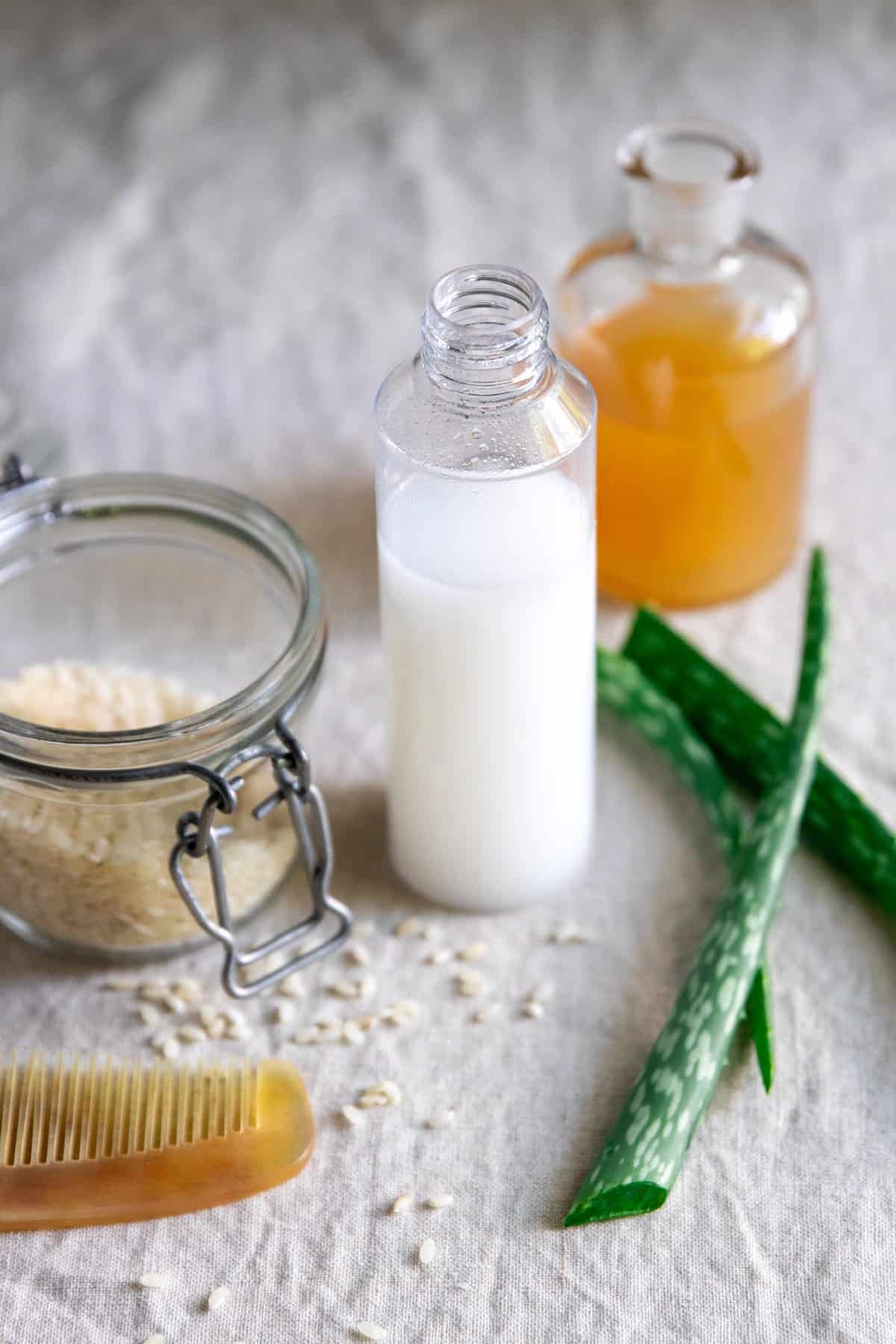
I recently started using rice water shampoo to prevent breakage in my fine hair (which seems to get finer with each passing year, ugh). And apple cider vinegar is a longtime hair fave for removing product buildup and adding shine.
Combining the dynamic duo in one easy hair rinse not only provides deep nourishment, but it also cleanses and clarifies the hair. Win-win!
Jump to:
Ingredients

Rice water — An age-old beauty secret passed down through generations, rice water carries some of the essential vitamins, antioxidants [source], and minerals found in rice [source] that can nourish the hair follicles, help repair damaged hair, and prevent breakage, making it an excellent choice for weak or fine hair. Learn the basics of making your own rice water here. There are 3 basic techniques you can try, but I usually go with the soak method.
Apple cider vinegar — ACV cuts through product buildup and grease on the scalp and helps to strengthen the hair shaft. And it’s a natural antimicrobial [source] and astringent, and its acidic properties [source] help balance the scalp’s pH levels, making it less susceptible to dandruff and itchiness.
Aloe vera gel — Aloe vera has moisturizing effects to soothe the hair follicles and any areas of dry, flaky scalp [source].
See the recipe card below for quantities.
Instructions
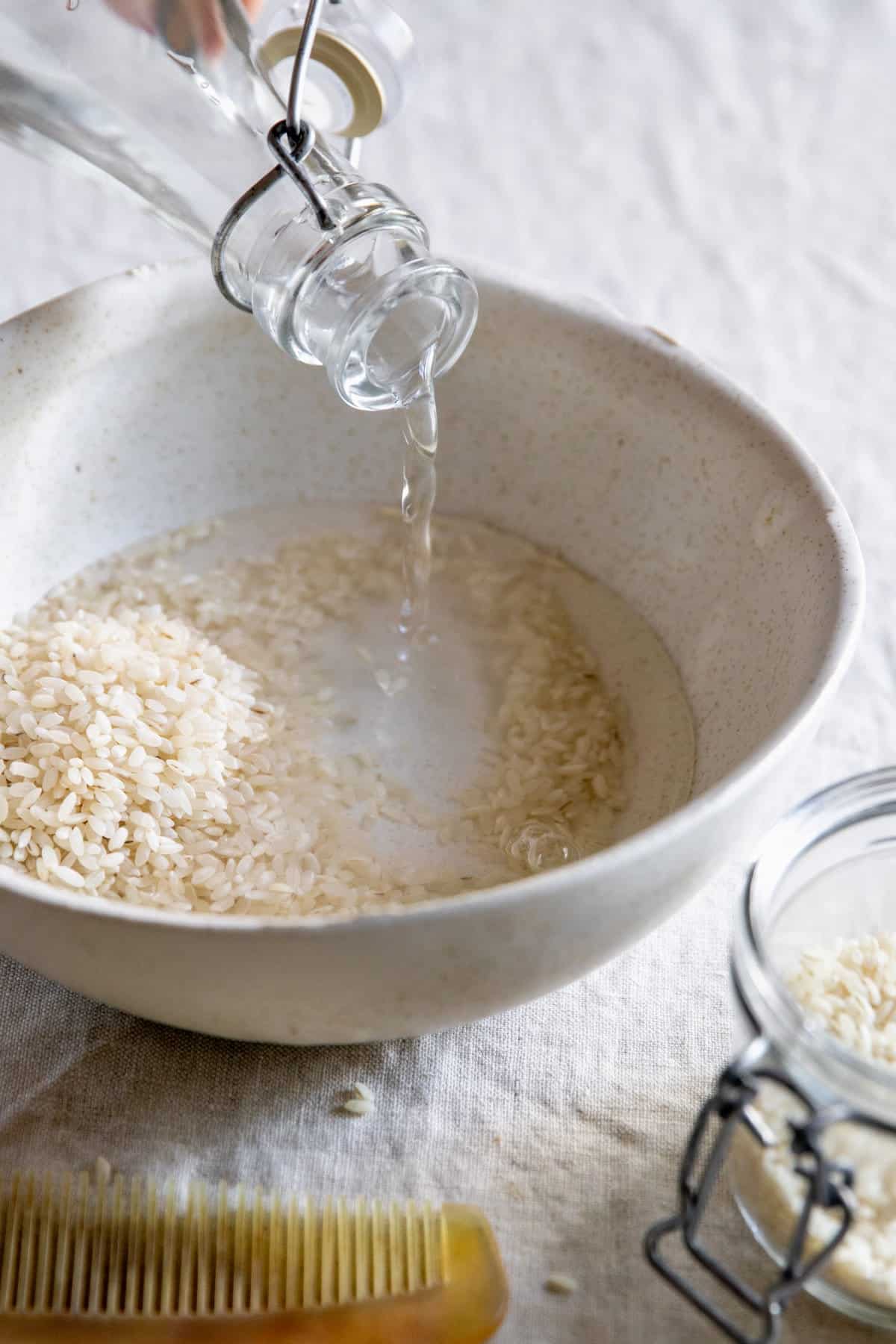
Step 1 | Make rice water
Follow the instructions here to make your own rice water. Add apple cider vinegar and aloe vera gel to 1 cup of rice water. Pour into a squeeze bottle—trust me, this makes applying it to your hair so much easier—and head to the shower.
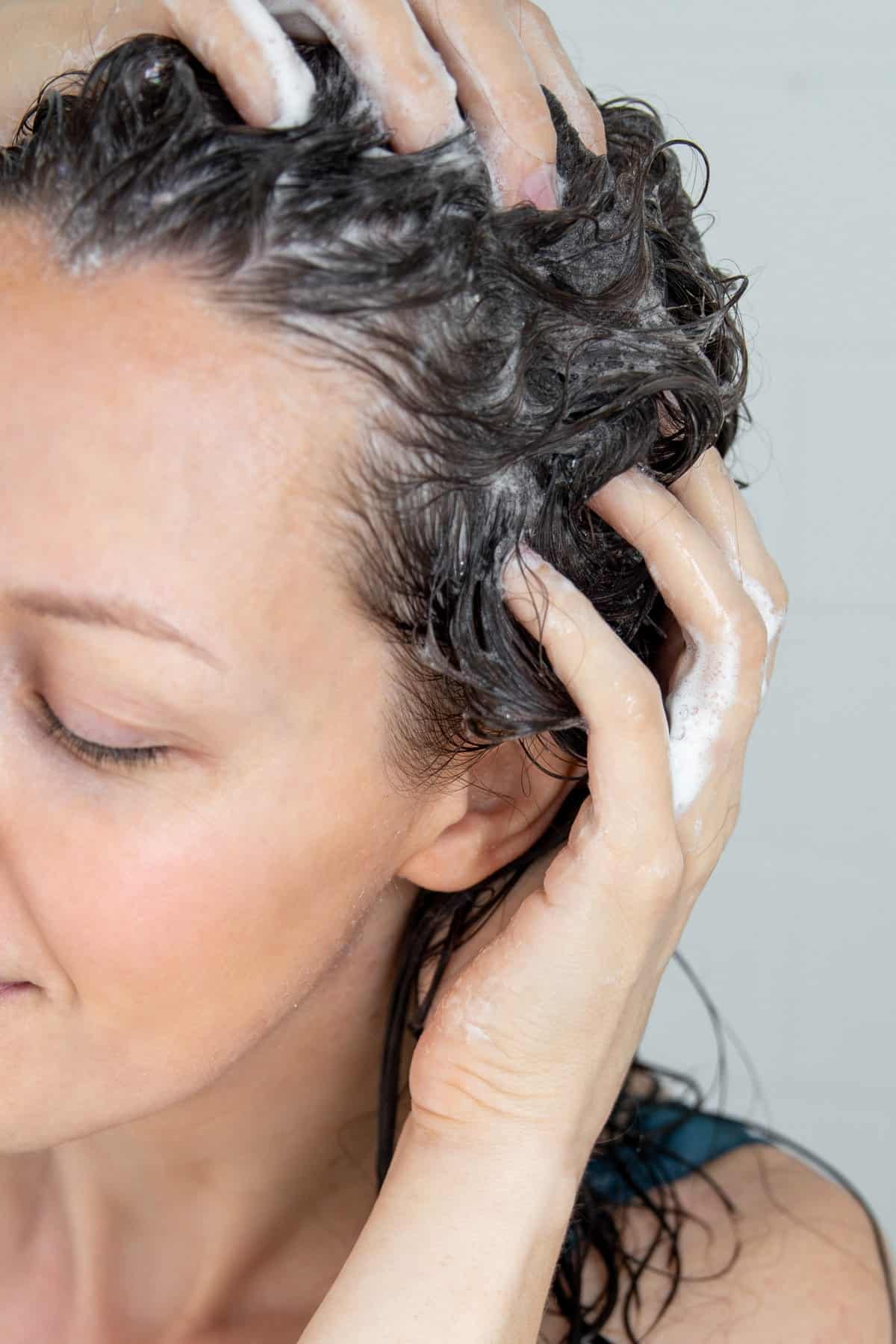
Step 2 | Shampoo twice
To prevent buildup on your scalp, New York City-based hairstylist Kim Bonondona recommends shampooing your hair twice before adding the rice water. Save conditioning for after, as it will close the cuticle, and you want to get the benefits of rice water penetrating through the hair shaft.
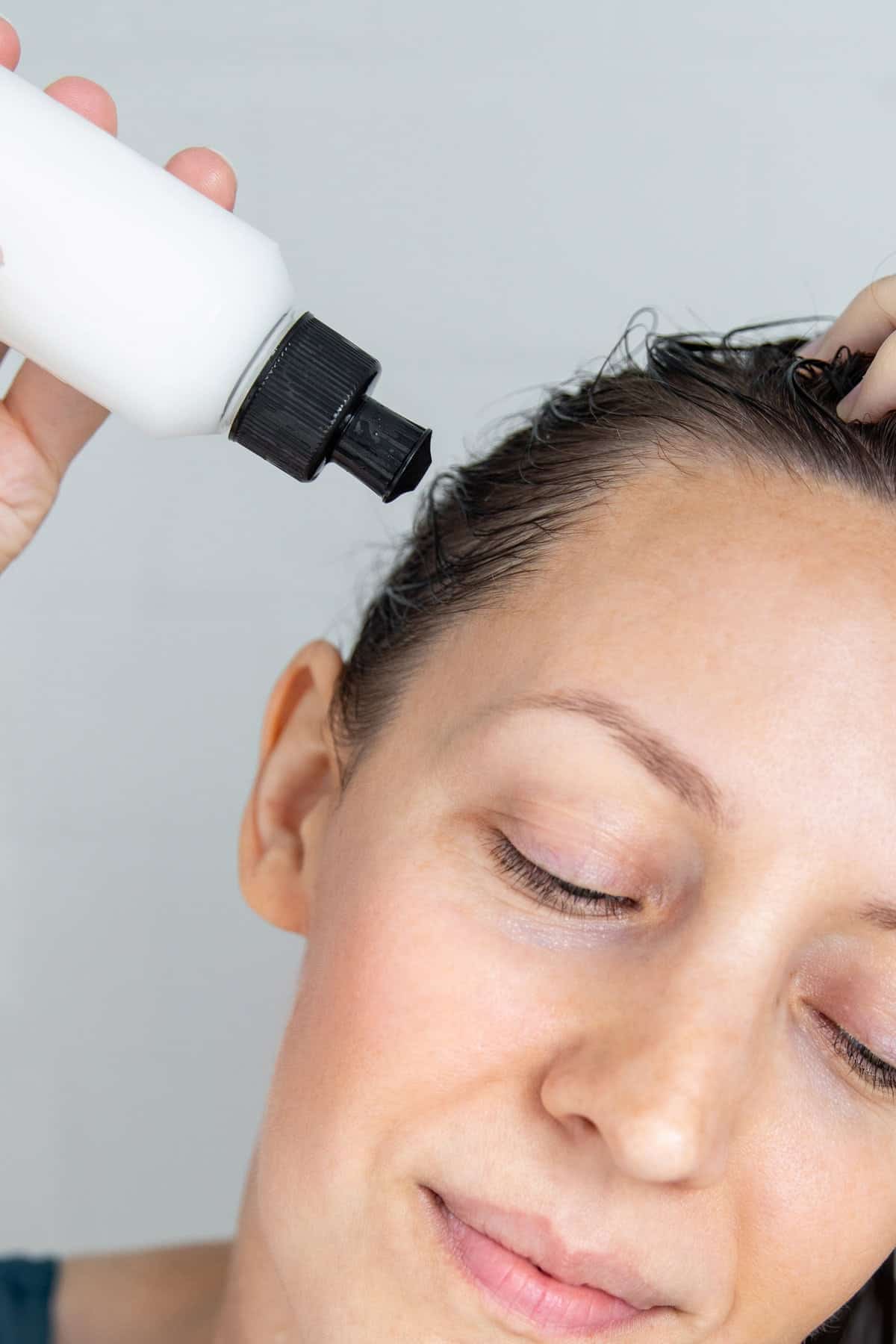
Step 3 | Apply to the scalp
Tip your head back and pour about 1 cup of rice water over your scalp and strands. Then give yourself a scalp massage.
“When you massage the rice water into your scalp, you enhance blood circulation, which will strengthen the roots, nourish the hair, and aid in new hair growth,” says Bonondona. “The rice water will also moisturize the scalp and help reduce dandruff or dry scalp.”
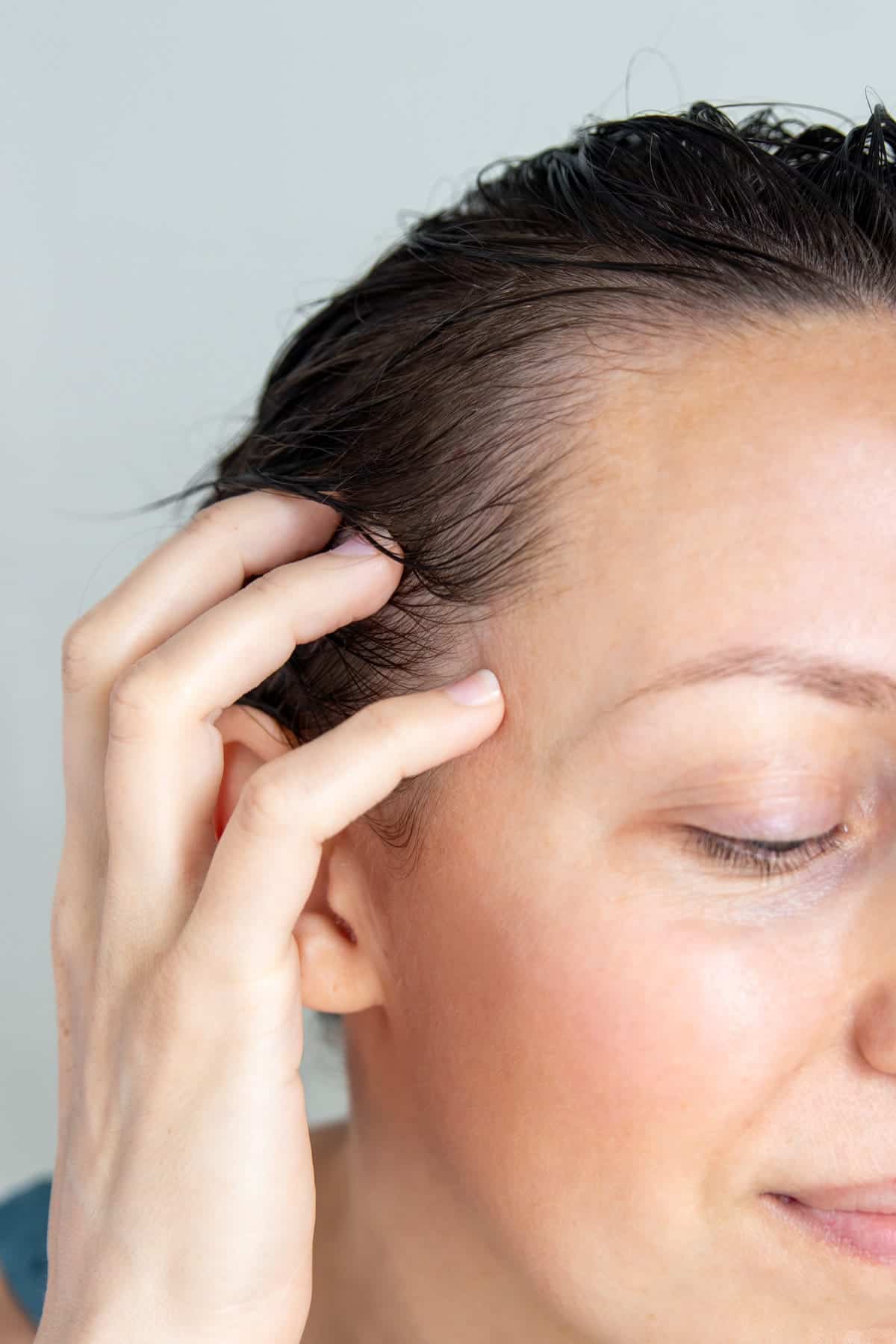
Step 4 | Let rice water sit for 15 to 20 min
As with any hair mask, the longer it sits, the longer it has to work its magic. For this reason, Bonondona suggests leaving the rice water in for at least 15 to 20 minutes so it can work to its full potential in repairing the hair and the cuticle.

Step 5 | Rinse and condition
Rinse out the rice water. “After the rice treatment, you can always condition for some added shine and moisture,” she says.
For additional benefits, let your hair air-dry after rinsing—without using a blow dryer.
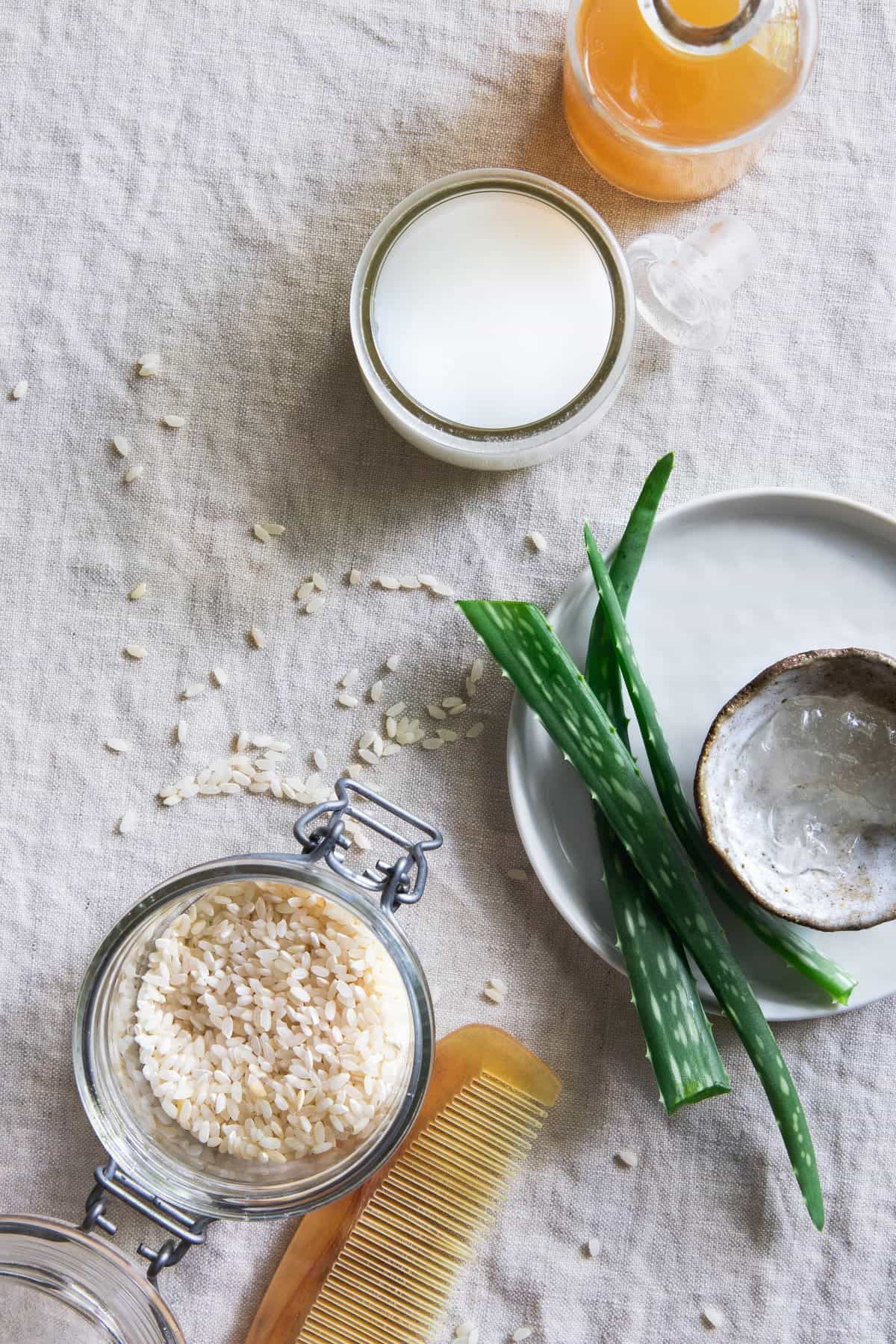
Step 6 | Repeat 1 to 2 times a week
Stylists recommend starting out by rinsing once a week to see how your hair responds. If you like it, try bumping it up to 2 or 3 times a week.
Using it too much can overload your hair with protein and starch, causing it to harden and feel heavy. So it’s best to increase your usage slowly and be ready to cut back if needed.
Hint: “Those with low-porosity hair should use rice water in moderation—no more than once a month—since the added proteins can make the hair stiff and brittle, causing it to break off,” celebrity hairstylist Andrew Fitzsimons cautions.
Nourishing Rinse for Dry or Damaged Hair

- ½ cup uncooked rice (white, brown, or jasmine)
- 2 cups filtered water
- 1 tablespoon honey
- 1 tablespoon jojoba or argan oil
Prepare the rice water following the basic recipe. Add honey and carrier oil to the strained rice water. Mix well before using.
The natural fatty acids from the oil provide much-need moisture [source], which will also strengthen the strands. Honey is a humectant that helps retain that moisture, and it contains amino acids and antioxidants to nourish and protect the hair [source].
Balancing Rice Water Hair Rinse for Oily Hair
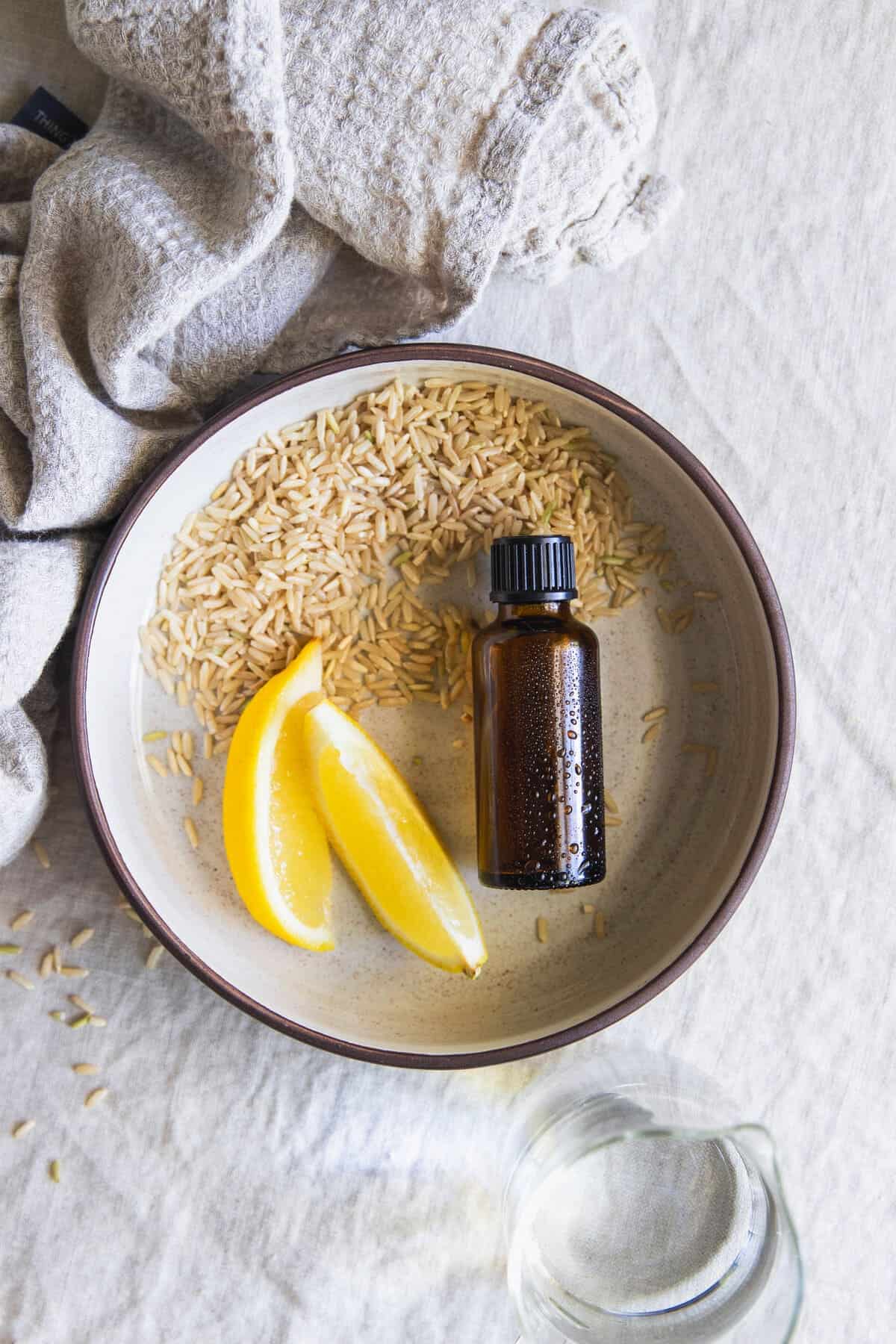
- ½ cup uncooked rice (white, brown, or jasmine)
- 2 cups filtered water
- 1 tablespoon lemon juice
- 1–2 drops tea tree essential oil
Prepare the rice water following the basic recipe. Add lemon juice and tea tree essential oil to the strained rice water. Lemon juice helps balance scalp oil production, while tea tree oil has antimicrobial properties [source] that combat the effects of excess oil.
Soothing Rice Water Hair Rinse for Sensitive Scalp
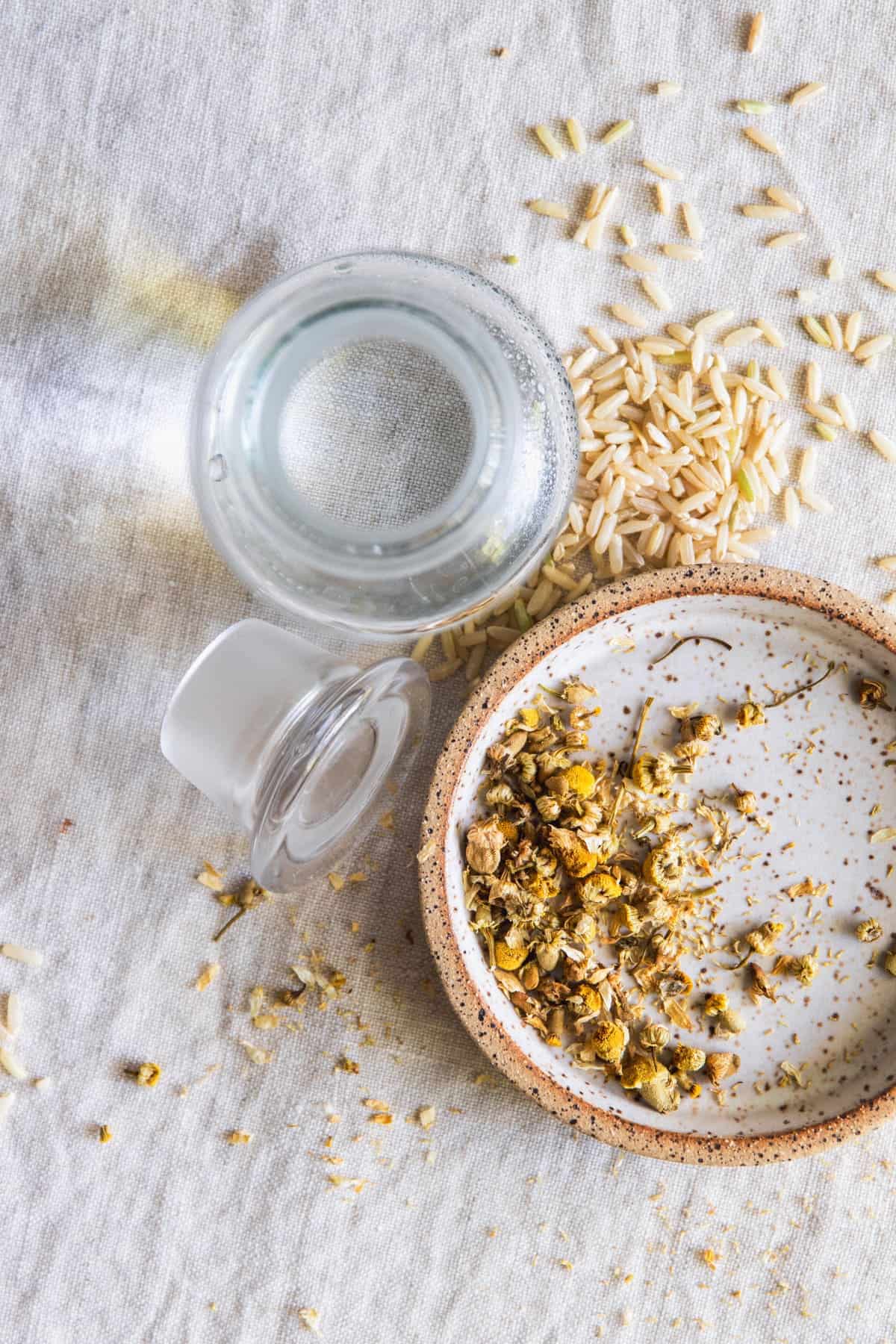
- ½ cup uncooked rice (white, brown, or jasmine)
- 2 cups filtered water
- 1 tablespoon chamomile flowers (dried or fresh)
- 1 tablespoon alcohol-free witch hazel
Create the rice water as in the previous recipes. Add chamomile flowers and witch hazel to the strained rice water. Chamomile is an anti-inflammatory that soothes the scalp [source], and witch hazel provides a gentle astringent effect. Mix well before using.
Variation: Pre-Shampoo Hair Mask
You can also use rice water as a hair mask before you wash your hair. Apply it liberally to strands and let it sit for 30 minutes, then shampoo and condition as usual.
Your hair will still get some of the nutritional benefits, and it should feel cleaner when you’re done.
Or use the rice water to make a simple hair growth spray.
Storage
Store any leftover rice water hair rinse mixture in the fridge for up to a week.
Top Tip
If you have leftover rice water, use it to make one of the rice water facial treatments or this simple rice milk cleanser. Rice water also has skin-lightening benefits, so it makes a great toner or hand soak for age spots.
FAQ
You can use a rice water hair rinse once or twice a week, depending on your hair’s needs. If you notice any signs of dryness or excessive buildup, reduce the frequency.
Yes, rice water is generally safe for colored or chemically-treated hair. However, it’s essential to perform a patch test first to check for any adverse reactions.
Yes, adding a few drops of essential oils like lavender, rosemary, or tea tree oil can individualize your recipe, enhancing the benefits and fragrance of your rice water hair rinse.
You can use rice water at room temperature, but some people prefer using it slightly warm for added comfort during application.
It’s recommended to shampoo your hair before using a rice water hair rinse. This will help cleanse your scalp and remove any excess oil or product buildup.
Yes, you can use diluted rice water as a leave-in conditioner for added nourishment and hydration. However, some people may prefer to rinse it out.
More Rice Water Recipes
If you want more ways to incorporate rice water into your routine, check out these recipes as well:
Strengthening Rice Water Hair Rinse Recipe
Materials
- ½ cup uncooked rice (white, brown, or jasmine)
- 2 cups filtered water
- 1 tablespoon apple cider vinegar
- 1 tablespoon aloe vera gel
Instructions
- Thoroughly rinse your rice, then combine ½ cup of uncooked rice with 2 cups of water in a small bowl or container. Let it sit for an hour while the water slowly extracts the nutrients from the rice, stirring or shaking it often.
- Strain out the rice. Add apple cider vinegar and aloe vera gel to the strained rice water and mix well.
- Apply to your hair after shampooing. Massage it into the scalp, and let it sit for 15–20 minutes. Then rinse and condition your hair as usual. Repeat 1–2 times a week.
References
- Goufo P, et al. Rice antioxidants: phenolic acids, flavonoids, anthocyanins, proanthocyanidins, tocopherols, tocotrienols, γ-oryzanol, and phytic acid. Food Sci Nutr. 2014.
- Marto J, et al. Rice water: a traditional ingredient with anti-aging efficacy. Cosmetics. 2018.
- Yagnick D, et al. Antibacterial apple cider vinegar eradicates methicillin resistant Staphylococcus aureus and resistant Escherichia coli. Sci Rep. 2021.
- Johnston CS, et al. Vinegar: medicinal uses and antiglycemic effect. MedGenMed. 2006.
- Surjushe A, et al. Aloe vera: a short review. Indian J Dermatol. 2008.
- Lin TK, et al. Anti-inflammatory and skin barrier repair effects of topical application of some plant oils. Int J Mol Sci. 2017.
- Ahmed S, et al. Honey as a potential antioxidant medicine: an insight into its molecular mechanisms of action. Oxid Med Cell Longev. 2018.
- Carson CF, et al. Melaleuca alternifolia (tea tree) oil: a review of antimicrobial and other medicinal properties. Clin Microbiol Rev. 2006.
- Srivastava JK, et al. Chamomile: a herbal medicine of the past with bright future. Mol Med Report. 2010.









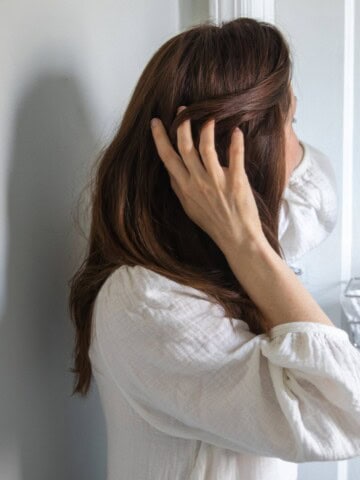
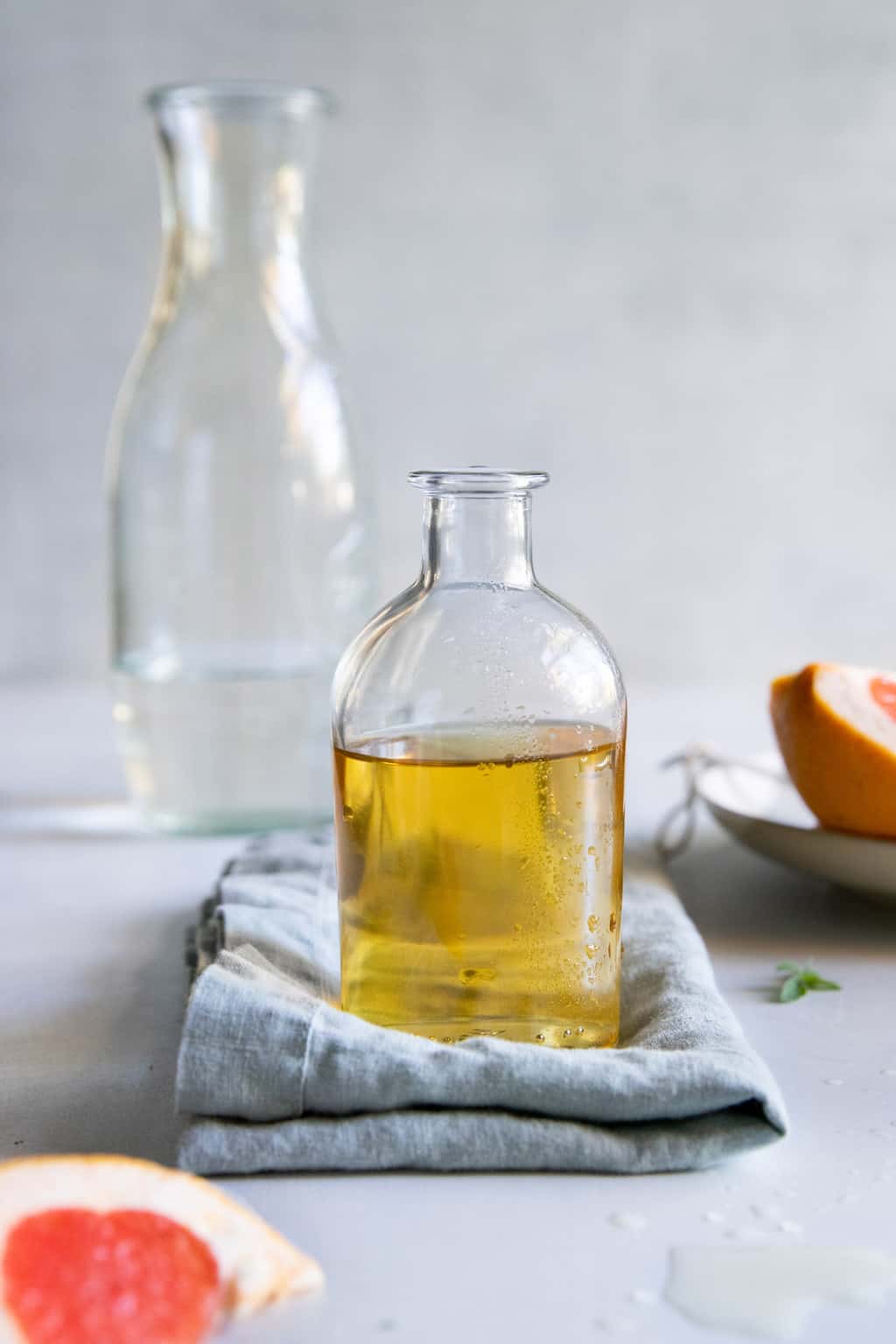
Leave a Comment